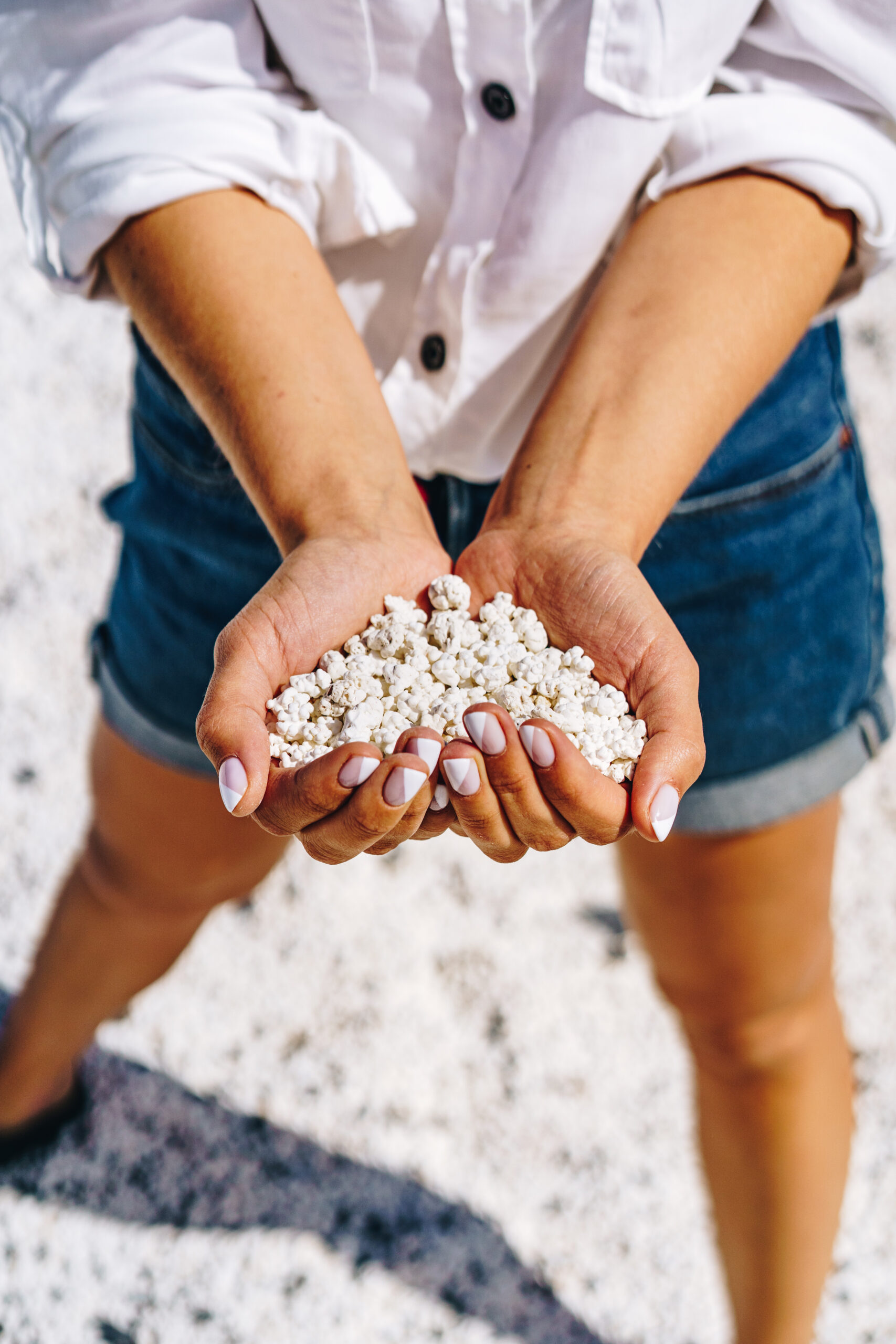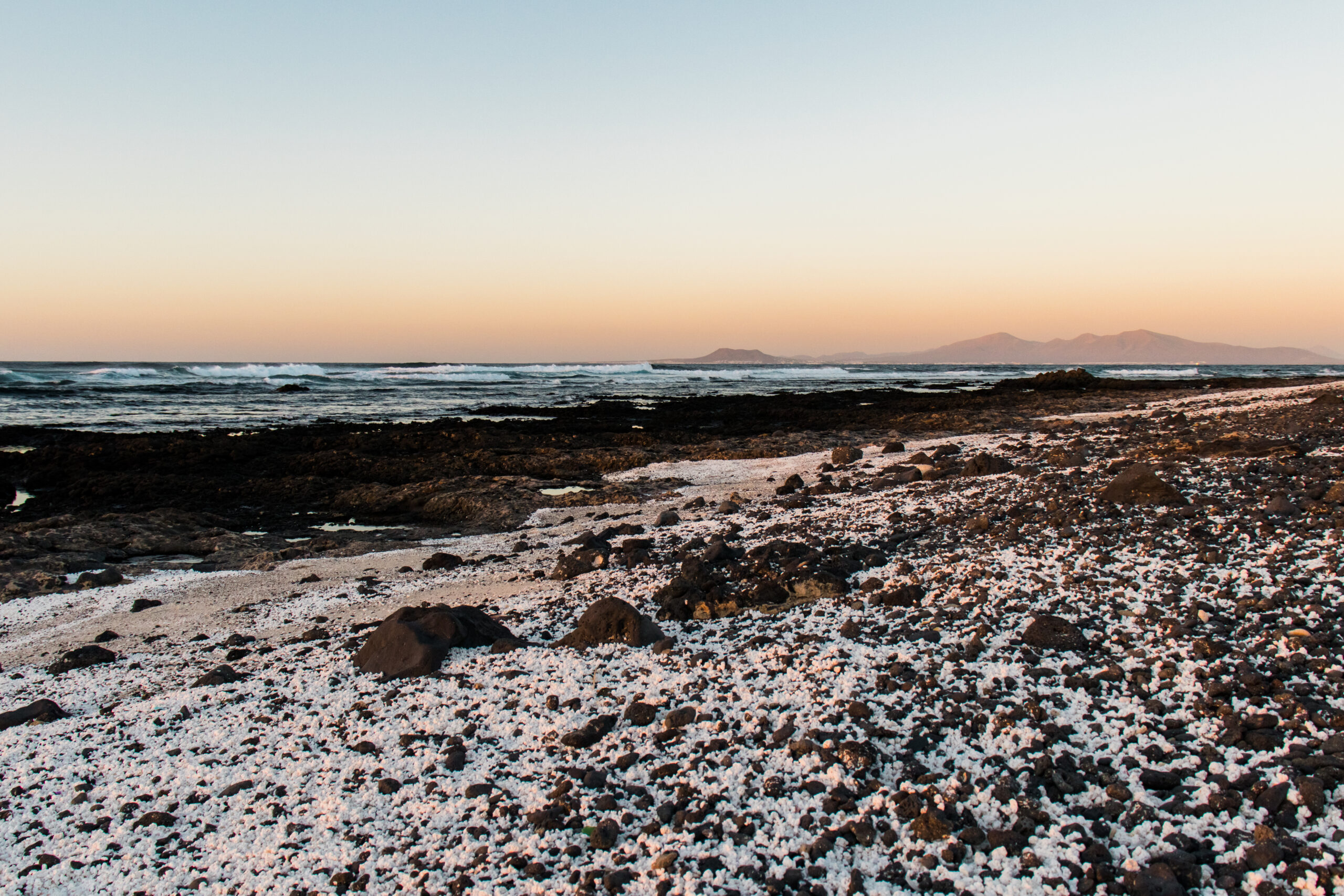This unique shoreline boasts a remarkable “sand” that closely resembles puffed-up popcorn. However, these kernels are not your typical beach sand; they are actually composed of coral fossils -calcareous algae- that have washed ashore.
Geological Wonder
These petite formations are scientifically known as “rhodoliths.” The fascinating geological spectacle that shapes Popcorn Beach is the result of countless centuries of natural processes. Erosion, tides, and volcanic activities have all played their part in crafting this extraordinary landscape.
Over time, the the ocean has meticulously polished these corals, bestowing upon them their distinctive shape and texture. It’s noteworthy that these rhodoliths grow underwater at an astonishing rate of just one millimeter per year. Therefore, when you encounter a section measuring 25 centimeters, you are witnessing a formation that has been developing for an impressive 250 years.
Ecological Value
While it’s perfectly acceptable to capture memories with these “popcorn” formations, it is strictly prohibited to take any of them with you and may incur penalties. This prohibition is rooted in the profound ecological value of these coral granules. Moreover, the cavities within these corals serve as homes for the eggs of various marine creatures. Over time, these cavities erode, contributing to the formation of beach sand.
Former President of Fuerteventura Sergio Lloret made a heartfelt appeal, emphasizing, “It is increasingly common to take a souvenir from the beaches of Fuerteventura, without knowing that every time a person takes a shell or other material, they are contributing to the imbalance of that ecosystem and, therefore, to the loss of biodiversity.”
Must visit?
Yes! Popcorn Beach is an absolute natural wonder that deserves a place on your list of must-visit destinations. Its charm makes it an ideal stop, even though it’s not your typical beach for swimming or sunbathing.
Please note: At Fuerteventura airport, officials diligently confiscate any sand, stones, or shells found in travelers’ luggage. Expert staff are tasked with identifying the origin of these geological materials, and up to 600 kilograms of such materials are returned to the beaches and other locations on the island every month.


